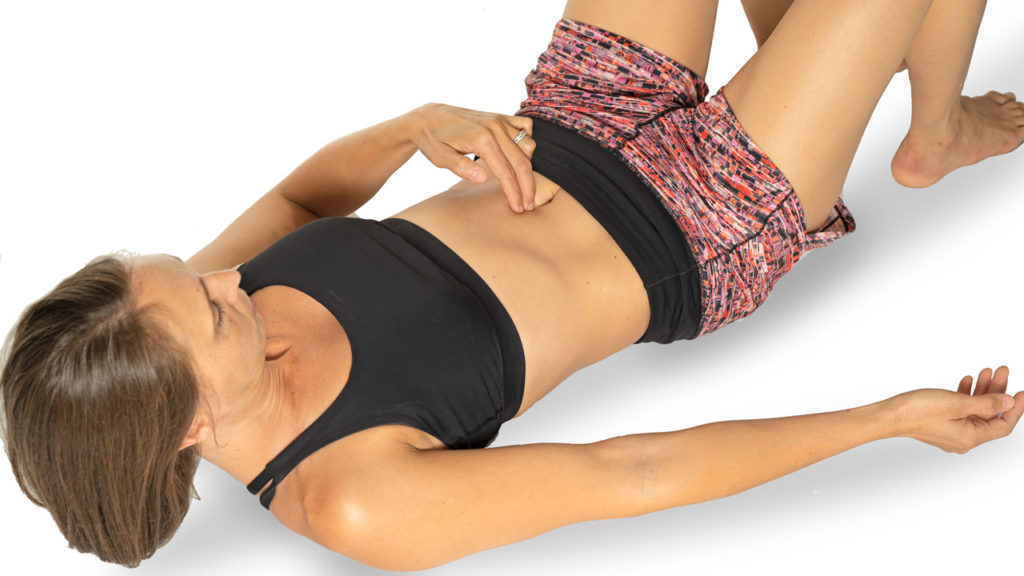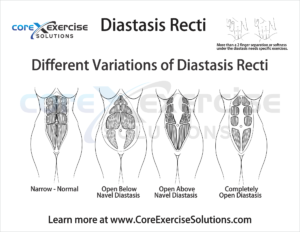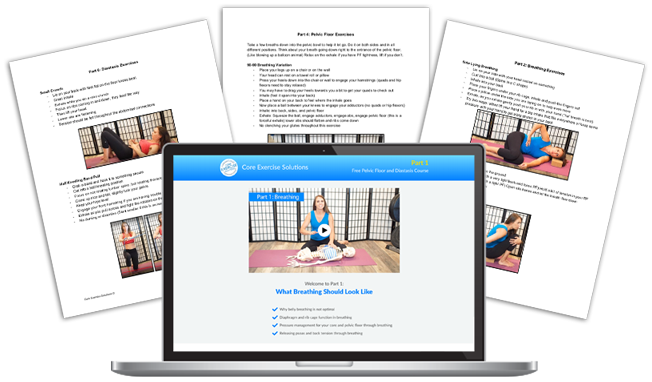A Closer Look at Diastasis
Both of the following people did not have the abs they wanted despite doing abdominal exercises. Let's take a deeper look into what causes a diastasis and why some people have the abs they want and others don't.
Subject #1: “Cameron”
Cameron came in to see me for hip pain and didn’t know about an abdominal separation. After getting a history and hearing a complaint of occasional recurrent low back pain, I decided to do a diastasis check. It showed a 3 finger gap about an inch above the belly button. Cameron had a habit of sucking in the belly button for the last 10 years. This eventually led to a flared rib cage and shallow breathing pattern and gave a very wide torso appearance. Cameron also suffered from some anxiety, like the nervous system was on overdrive, but not having had a deep breath in years, I can see why.
Subject #2: “Morgan”
Morgan came in to see me for knee and shoulder pain and wanting to get rid of a pouch belly. “I don’t have that much body fat. Why does my belly continually pooch out? I do crunches and sit ups every morning.” Morgan has worked at a sitting job for too long and subsequently had no glute (butt) muscles and forward head posture. Morgan had a 3.5 finger diastasis and a previous linea alba hernia repair (stomach bulged out in the midline). When Morgan would do a crunch you could still see tremendous strain on the hernia repair and in sitting and standing had a lower pouch to the belly.
What can we learn from these people?
Both of the above people had a diastasis (abdominal separation) commonly found in postpartum women. Guess what both of these people had in common? They are men! Neither had ever gained weight in their life or had abdominal stretching of any kind. But, according to traditional advice that’s the main cause of a diastasis and there is nothing we can do to prevent it, so what gives?
Yes, rapid stretching of the abdominal wall during pregnancy increases your risk of a diastasis. But, what we need to take a closer look at is why do some women who gain the same amount of weight and size during pregnancy quickly close their diastasis or not get one at all, and others keep it forever and have that mommy tummy pooch issue or end up with hernias?
The answer is not the fact that they were pregnant. The answer lies in how their deep stability system fires and how they utilize their body for movement.
I constantly hear that it’s not fair. Why do I suffer from XYZ, but my friend didn’t or that movie star doesn’t? Well, just because mainstream health care can’t explain the subtle nuances of great posture and loading of the body, doesn’t mean there is not a reason. Most injuries (like diastasis and pelvic floor issues) are a long time in the making. (There are some exceptions to this: trauma with delivery, etc.) But, those exceptions aside, this is an issue of how your body contracts when you move. Are everyday tasks, even as simple as standing and walking causing harm on your body or is it making you stronger?
We all need to be asking "why" and then finding the answers.
Both the above men were fixable, but I will have to say, fixing a postpartum woman is soooo much easier. These men had ingrained habits and we had to fight to correct them. From my experience, a woman’s body postpartum is very malleable. Ready for change! With the right direction, it can change quickly and rapidly.
So, instead of chastising the word “bounce back” maybe we should be asking ourselves why some women “bounce back” and others don’t. Instead of trying to make the ones that don’t “bounce back” feel better about it, maybe we should figure out what’s going wrong and fix it, so they can have a great working body again.
This seems like a way better solution to me and so that’s what I’ve been trying to do.
Working my ass off for the last 15 years learning and experimenting with not just fixing injuries but trying to understand how the body works and what’s causing them is paying off! I’m still amazed at the number of messages I get every week like this one: “Sarah, I’ve been doing your exercises for 3 weeks and my diastasis has completely closed. I can’t even believe it because I’ve been working on my core for years. This is absolutely incredible.”
I’m not nearly where I want to be and have years of learning ahead, but I have learned one thing that keeps standing out to me: you must look at the system as a whole to completely fix any issue. No more bandaids, let’s build incredible, invincible bodies from the inside out.
Want to learn how to help women (and men) get the results they are looking for?
Join me in the PCES CEU course to find out how you can help more people today!
Try This Free Diastasis Recti Educational Series
Dr. Sarah Duvall, PT, DPT, CPT, and the CES Team have helped thousands of women create the strength and stability needed to overcome diastasis recti and build core strength.
Join us today for this 4-part Diastasis Recti Video Series, absolutely free.
We don't spam or give your information to any third parties. View our Terms of Use and Privacy Policy.
Working with pregnant and postpartum clients/patients?
This 6-part course offers key takeaways on breathing, pelvic floor strengthening and diastasis recovery. Sign up and start learning today!



